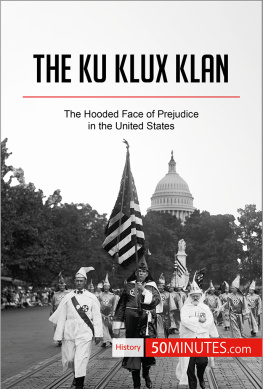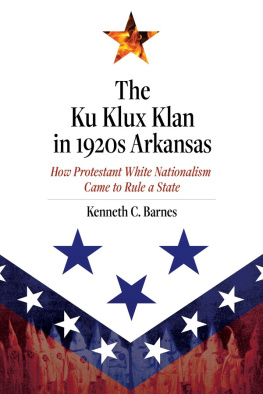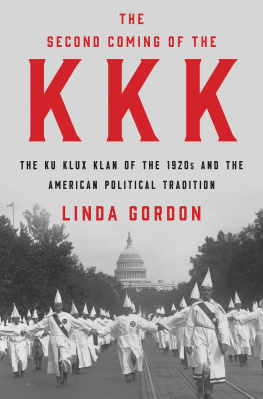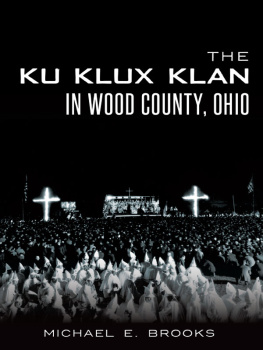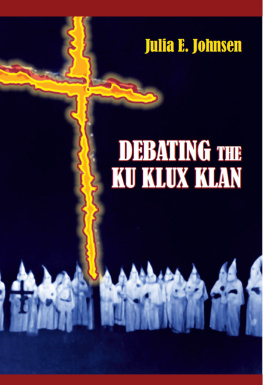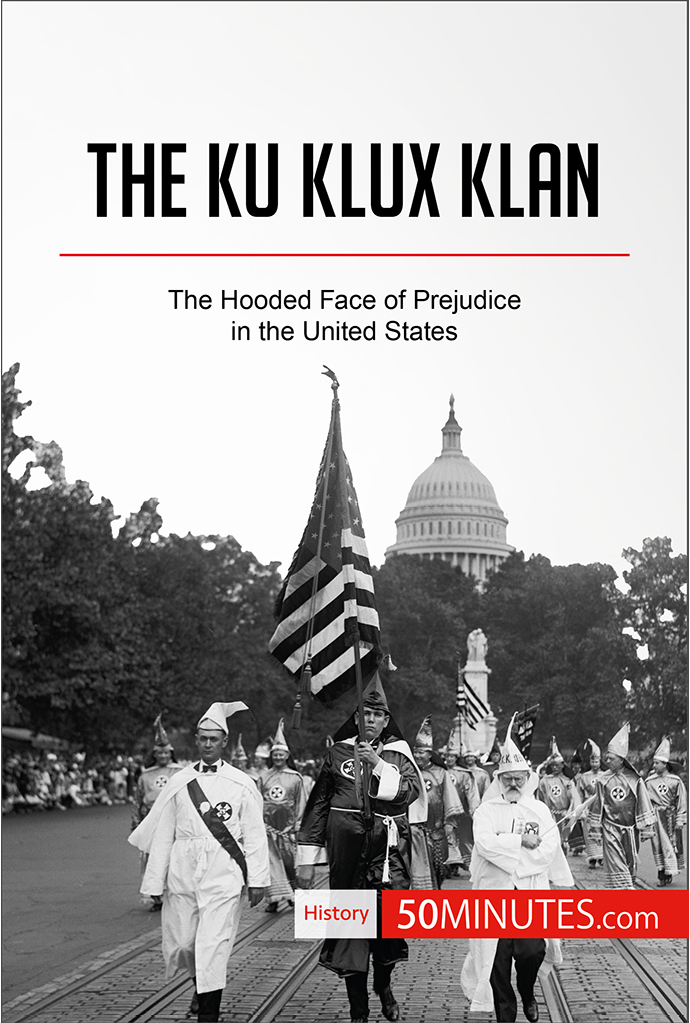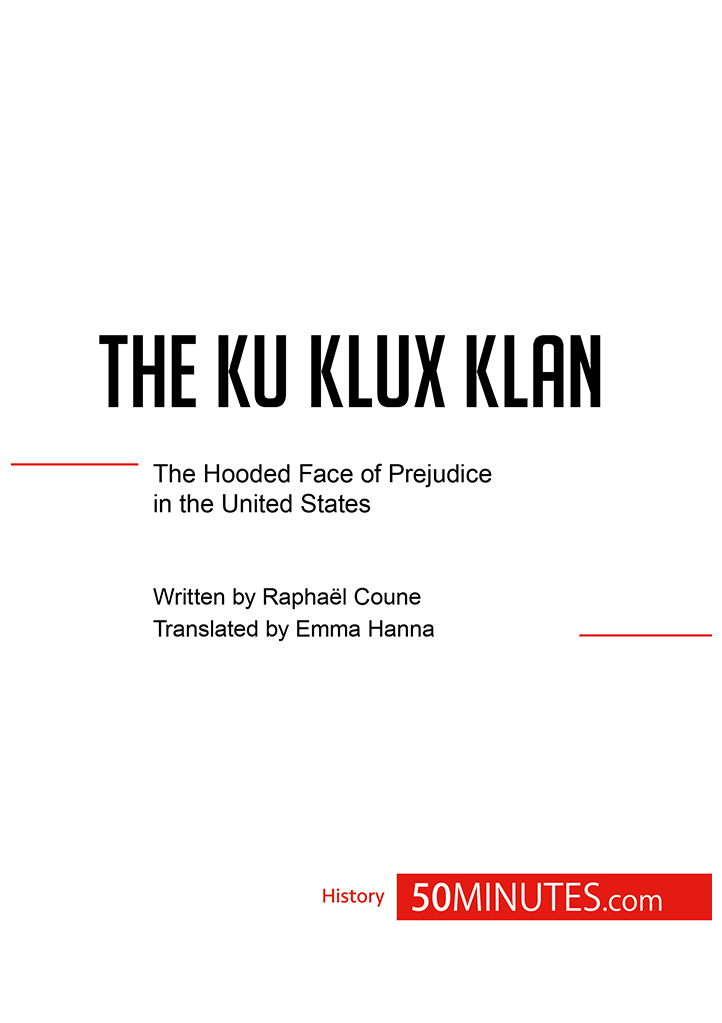Nowadays, the first thing that springs to mind when the KKK is mentioned is the memory of the acts of violence committed against black Americans and against the civil rights movement of the 1960s. However, other facts about the organisation are less well known, such as the fact that it first emerged over a century before the assassination of Martin Luther King (American minister and civil rights activist, 1929-1968). Similarly, it is difficult to reconcile the groups actions with the fact that its origins can be partially traced back to the myth of Southern chivalry and the goal of protecting widows and orphans, and few people realise that the riots of the 1960s, which left such indelible scars on the collective imagination, were far from the most brutal acts of violence perpetrated by the KKK. On the other hand, the scandals and conspiracies that the KKK and the world of American politics were embroiled in during the 1920s have faded somewhat from our memory, as has the fact that President Woodrow Wilson (1856-1924), who was renowned for his role in drafting the Treaty of Versailles (1919) and founding the League of Nations, publically praised the KKK and claimed that they were acting in the countrys best interests. Today, it seems difficult to believe that there was once a time when five million Americans claimed to believe in and support white supremacy. So how can all of this be explained? The KKKs name still strikes fear into the hearts of anyone who hears it, but what is the real story of this group, which claims to uphold chivalry and aim to protect widows and orphans, but which has committed countless atrocities, gained a particular reputation for public lynchings, and become synonymous with brutal, active racism?
The changing face of the KKK
The origins of the KKK
The KKK was born in Pulaski, Tennessee, as is indicated by the commemorative plaque which was unveiled in 1921 by John B. Kennedy (1839-1921), who was the only one of the founding members who was still alive at the time. This plaque reads as follows: Ku Klux Klan organized in this, the law office of Judge Thomas M. Jones, December 24 th , 1865. Names of original organizers: Calvin E. Jones. John B. Kennedy. Frank O. McCord. John C. Lester. Richard R. Reed. James R. Crowe. However, the current owner of this building has reversed the plaque to face the wall, so while the plaque remains, and serves as a reminder of the towns history, these words are no longer visible, symbolising the towns present-day rejection of this ideology.
The six founders were old friends and former soldiers in the Confederate army, who found themselves at a loose end when they returned home after four years of intense fighting. It was a mere six months after the end of the Civil War, and with no better ideas for how to occupy their time, the men decided to found a club. Their group did not have any specific goals other than meeting up, echoing the concept of the fraternies which were becoming popular among university students. John B. Kennedy suggested calling this club Kuklos (from the Greek kuklos , meaning circle). James Crowe then suggested splitting the word in half and replacing os with ux to form the word lux (meaning light in Latin). Finally, John Lester pointed out that they were all of Scottish descent and had read Walter Scotts (Scottish novelist, 1771-1832) novels about the legendary clans that had ruled over Scotland in bygone eras. They decided to spell the word clan with a K for alliterative effect, and the Ku Klux Klan was born.
The American Civil War
The American Civil War was an armed conflict which lasted from 1861 to 1865, and was fought between the Northern United States (the Union) and seven Southern states (the Confederacy), which sought to secede from the rest of the country. The Confederates refused to acknowledge the election of Abraham Lincoln (1809-1865) as president because he supported the abolition of slavery. As such, the Southern states declared their independence and fought to defend it, while the Unionist states fought with the goal of keeping the country united.
From early 1866 onwards, the six comrades began meeting up in secret, often at night, and decided to dress up in costumes to make themselves look mysterious and spread terror through the town. After all, they reasoned, what could be more entertaining than giving people a fright? They all draped themselves in sheets, cut pillowcases into hoods to cover their hair, and paraded through the streets of Pulaski at night. Who can say whether the towns inhabitants felt fearful or simply amused as they peered out their windows at this bizarre spectacle? Either way, the six young men were delighted to overhear their neighbours discussing it excitedly the next morning, and their ranks soon swelled to include hundreds of new members who were eager to participate in these midnight patrols. Every night, the members of the KKK filed through the streets, creating the illusion of an army of ghostly invaders. The towns black population were particularly spooked by this sight, as the harsh laws of the time that barred them from receiving an education allowed superstition to run rampant, and a belief sprung up that these sinister figures were the ghosts of Confederate soldiers who had died in the war and had come back to haunt the town.
The members of the KKK gradually came to view their nocturnal gatherings as an outlet for their bitterness towards the people that they held responsible for the war and the Confederates defeat. They no longer saw their night-time wanderings as a way of causing childish mischief, but as a way of genuinely terrifying the towns black population by making them believe that the spirits of murdered soldiers had come to haunt them. They even started plotting ways of making these scenes more realistic: for example, they demanded buckets of water, which they would then drink in a single gulp using a pipe hidden beneath their hoods, or saluted by holding up a skeletal hand.
A year after it was founded, the first KKK congress was held in Nashville in January 1867. The KKKs influence had spread considerably throughout the state, and the group was starting to see a need for organisation and structure. As such, the members created an admissions process, established an organisational hierarchy and defined the groups philosophy. The KKK became a secret society, and gained a foothold in all of the Southern states. The position of Grand Wizard was offered to Robert E. Lee (general-in-chief of the Confederate Army, 1807-1870), but he turned the role down on account of his age. In the end, Nathan Bedford Forrest was selected as leader.

